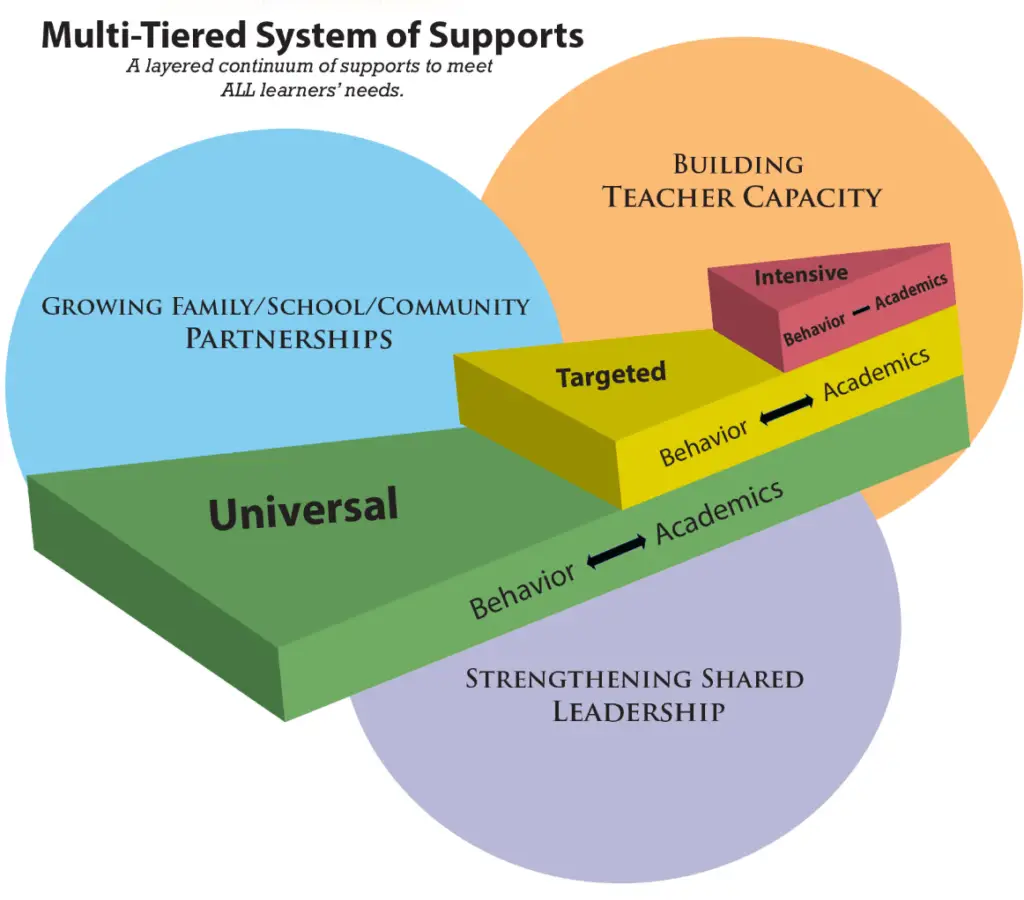And its role in secondary literacy education
In education, we are used to “the next new thing.” MTSS is not that, though. It’s actually another iteration of 1965’s Elementary and Secondary Education Act (ESEA). The past five and a half centuries have provided a few major revisions of that law:

Kindergarten through eighth grade tended to be the main focus for the law and its iterations.
So why does it matter to middle and high school?
Even though the major focus on the law is on elementary grades, the Every Student Succeeds Act (ESSA) requires annual testing of students from third through eighth grades – then once in high school. That means that upper elementary, middle school, and high schools are particularly addressed in this law.
It’s more than that, though. As secondary teachers, our job focuses on student preparation for active participation in society. And research tells us that students who were struggling readers in elementary school are likely to be struggling readers as they enter high school. In fact, fewer than one-third of public school 8th graders read at or above grade level (Perie, M., Grigg, W. S., & Donahue, P. L. (2005). The missing skills certainly have an impact on student success in content area classes.
“The term ‘multitier system of supports’ means a comprehensive continuum of evidence-based, systemic practices to support a rapid response to students’ needs, with regular observation to facilitate data-based instructional decisionmaking [sic].”
Every Student Succeeds Act: US PUBLIC LAW 114–95—DEC. 10, 2015
What are the key components of MTSS?
No matter the grade level, MTSS has common components. And while implementation of a multi-tiered system of support may look different by state and district, each of the following components must be present to meet the criteria of MTSS:
- Academic and behavior interventions organized along a tiered continuum, beginning with a strong academic core program and intensifying interventions matched to student needs.
- Reliance on assessments to identify student needs and choose appropriate interventions.
- Student performance data drives decisions about instruction, interventions, implementation, and programs.
- Management systems exist to ensure implementation of MTSS.
In other words, a continuum describes student academic and behavioral performance. Matching interventions are provided for students indicating a weakness in any area. Of course, student response to those supports is tracked to ensure progress. Then supports are strengthened or removed depending on that response. Furthermore, all programs (such as prescriptive study hall, speech, reading intervention) are included in the list of supports available to students.
Wait – Is this like Response to Intervention (RtI)?
First, if you are in secondary education AND you know what RTI is, you’re already on the right track! If not, no worries! RtI is a much more common phrase in the elementary world.
MTSS is an all-encompassing framework. It reviews the performance of all students and all programs and forces the match between the two. It requires assessment and tracking to ensure successful supports.
RtI is simply a component of an MTSS system. It is the process of sorting students into tiers based on level of performance in each area (academic and behavioral). In other words, the RtI process leads to success within the MTSS framework.

So what happens in Reading MTSS REALLY?
Well, that’s hard to pinpoint with high accuracy. Districts personalize the steps in relation to state or local mandates and the interventions and programs offered. Generally, the process is:
| Data is collected and analyzed. (Include assessments, observations, records, and input from stakeholders.) |
| Needs are identified – academic and/or social-emotional. |
| Depth of need is labeled – slightly below level, below level, or well-below level (a.k.a. RtI Tiers; definition of each tier tends to be district or site-based) |
| Interventions are prescribed and implemented. (Consider if the issue is instruction, curriculum, the learning environment, or something specific to the learner.) |
| Student progress is monitored. |
| If progress is made to grade level, dismissal of interventions; if not, intensity is added or methods are changed. |
| Committees reflect on the MTSS process and make any recommendations for changes – instruction, curriculum, environment, and/or programs. |
In middle and high school, these steps may also include a type of credit recovery or summer school.
Certainly in all steps, parents or guardians are notified and involved. Conversely in all steps, a single teacher or staff member does not act alone. Committees analyze data, suggest interventions, and review data indicating progress.
Additional opportunities for improving literacy
Although states determine the scope of funding for MTSS components, the law itself allows for these additional aspects in K-12:
- recruiting, placing, training, and compensating literacy coaches
- connecting out-of-school learning opportunities to in-school learning, specifically in regards to literacy improvement efforts
- training families and caregivers to support the improvement of adolescent literacy
- forming a school literacy leadership team
- providing time for teachers and other literacy staff (such as librarians or reading specialists) to meet to plan comprehensive literacy instruction
Do you need to train faculty in your MTSS process?
Are you are responsible for training your faculty in your district-specific requirements? Make understanding your district’s initiative meaningful and engaging. Use this MTSS Whole Child Training Enhancement to add engaging, fun, and memorable experiences around the information you’re delivering.
What about interventions for secondary struggling readers?
We know it is difficult to find age appropriate interventions for secondary students. We have some for you! Please enter your name and email below for weekly information, resources, and freebies. Or visit our Products page for resources just for older students!


